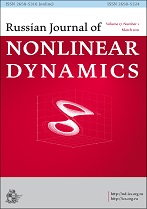|
Mathematical problems of nonlinearity
The Elliptic Integral Machine:
A Collision-based Model of Computation
I. A. C. Melnik
Universidade Federal do Pampa
Av. Pedro Anunciacão, 111, Cacapava do Sul, 96570000, Brazil
Abstract:
In this work we will show how any elliptic integral can be computed by analyzing the
asymptotic behavior of idealized mechanical models. Specifically, our results reveal how a set of
circular billiard systems computes the canonical set of three elliptic integrals defined by Legendre.
We will treat these Newtonian systems as a particular application of the billiard-ball model,
a ballistic computer idealized by Eduard Fredkin and Tommaso Toffoli. Initially, we showed
how to define the initial conditions in order to encode the computation of a set of integral
functions. We then combined our first conclusions with results established in the 18th and 19th
centuries mostly by Euler, Lagrange, Legendre and Gauss in developing the theory of integral
functions. In this way, we derived collision-based methods to compute elementary functions,
integrals functions and mathematical constants. In particular, from the Legendre identity for
elliptic integrals, we were able to define a new collision-based method to compute the number $\pi$,
while an identity demonstrated by Gauss revealed a new method to compute the arithmeticgeometric
mean. In order to explore the computational potential of the model, we admitted
a hypothetical device that measures the total number of collisions between the balls and the
boundary. There is even the possibility that the methods we are about to describe could one day
be experimentally applied using optical phenomena, as recent studies indicate that it is possible
to implement collision-based computation with solitons.
Keywords:
collision-based computing, billiard, physical models of computation, elliptic integral,
arithmetic geometric mean.
Received: 07.07.2021
Accepted: 28.01.2022
Citation:
I. A. C. Melnik, “The Elliptic Integral Machine:
A Collision-based Model of Computation”, Rus. J. Nonlin. Dyn., 18:1 (2022), 83–102
Linking options:
https://www.mathnet.ru/eng/nd780 https://www.mathnet.ru/eng/nd/v18/i1/p83
|

| Statistics & downloads: |
| Abstract page: | 186 | | Full-text PDF : | 124 | | References: | 21 |
|




 Contact us:
Contact us: Terms of Use
Terms of Use
 Registration to the website
Registration to the website Logotypes
Logotypes








 Citation in format
Citation in format 